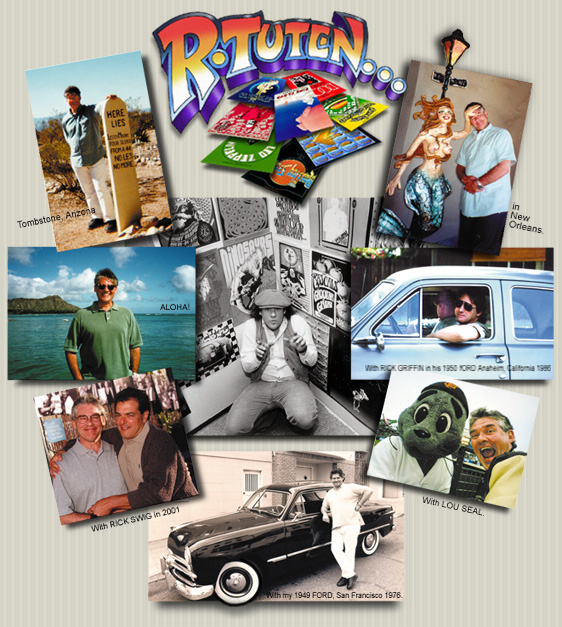| In 1966,Tuten made a habit of hitchhiking back and forth between Los Angeles and San Francisco, soaking up everything that was happening musically at the Avalon Ballroom and the Fillmore Auditorium. Dropping acid became a highway ritual. "I literally road tested the stuff after I picked it up in San Francisco. Hitchhiking back to LA in the middle of the night, I'd encounter all kinds of animals - bears, owls, wolverines, cows. At the time I wasn't sure if they were real or imagined. All I know is they were definitely amongst me." During these visits to San Francisco, Tuten remembers catching a glimpse of Mouse and Kelley's posters. "That's what brought me to San Francisco for keeps." He reveals that it was the posters of Mouse, Kelley and Griffin that fueled his imagination and influenced his approach. "I liked Mouse and Kelley's posters because they were so friendly to the eye. But Griffin influenced me the most. Griffin still influences me." Tuten madethe move to San Francisco in January 1967, making ends meet by freelancing as a graphic designer, until he got his break with Bill Graham in 1969. When he moved back to San Francisco, Tuten made the acquaintance of graphic illustrator Daddy Bread (Bill Bostedt). Tuten and Bread became close friends, and they collaborated on many projects, including some of the most famous rock posters, until Daddy Bread's death in 1998. Tuten remained in San Francisco until 1980 when, suffering from burnout, he moved up to Lake County. He continued to produce for Bill Graham and others until he was struck by a debilitating stroke in early 1984. He produced no work in 1984 and 1985 while he struggled to recover, but, while he was in the hospital, Rick Griffin visited him and invited him to come down to work with him in Santa Ana once he had sufficiently recovered. Tuten took him up on his offer and, starting in 1986, he made multiple trips to Santa Ana to work with Griffin. In 1989, Tuten returned to the Bay area where he currently resides. The artist related that unlike many of the poster artists before and after him, he made no conscious effort to translate emotional depth or personal or political conviction. His posters owe more to his skill as a draftsman and to his regard for the commercial art formats of American advertising. "There really isn't any heavy meaning in my posters. What I did graphically was a combination of what I liked and what fit." Tuten was interested in trains, ships, classic automobiles and planes, and ultimately what fit was an eclectic mix of graphic imagery, photographs and lettering. Although Tuten's posters show considerable variety, his formats and lettering style generally reflect the influence of early 20th century product labels. Tuten's own taste, sense of proportion, and craftsmanship, along with the added influences of Mouse, Kelley, and Griffin, imparted new vigor to these conventional classical forms and produced a distinctive personal style. Randy Tuten is the only poster artist to span 5 decades designing for The Fillmore. He remains a prolific poster designer today, and still a regular producer for Bill Graham Presents and other promoters. Tuten's work has long been recognized for its seminal influence in the art of modern rock and roll, and has been featured in major museum exhibits as well as in several important book-length retrospective studies of rock art. Though his work shows the influences of the 60's era, it has also evolved in recent years into an orderly and highly varied style of ornamental commercial art, often reminiscent of the advertising used in the deco era. The general consensus in the rock art community is that he has continued to grow as an artist and may be doing his best, most creative and exciting work at the present time. His posters are now a part of rock history, and for both curator and collector, will always be among the most desirable and telling artifacts of West Coast rock aesthetics. |


